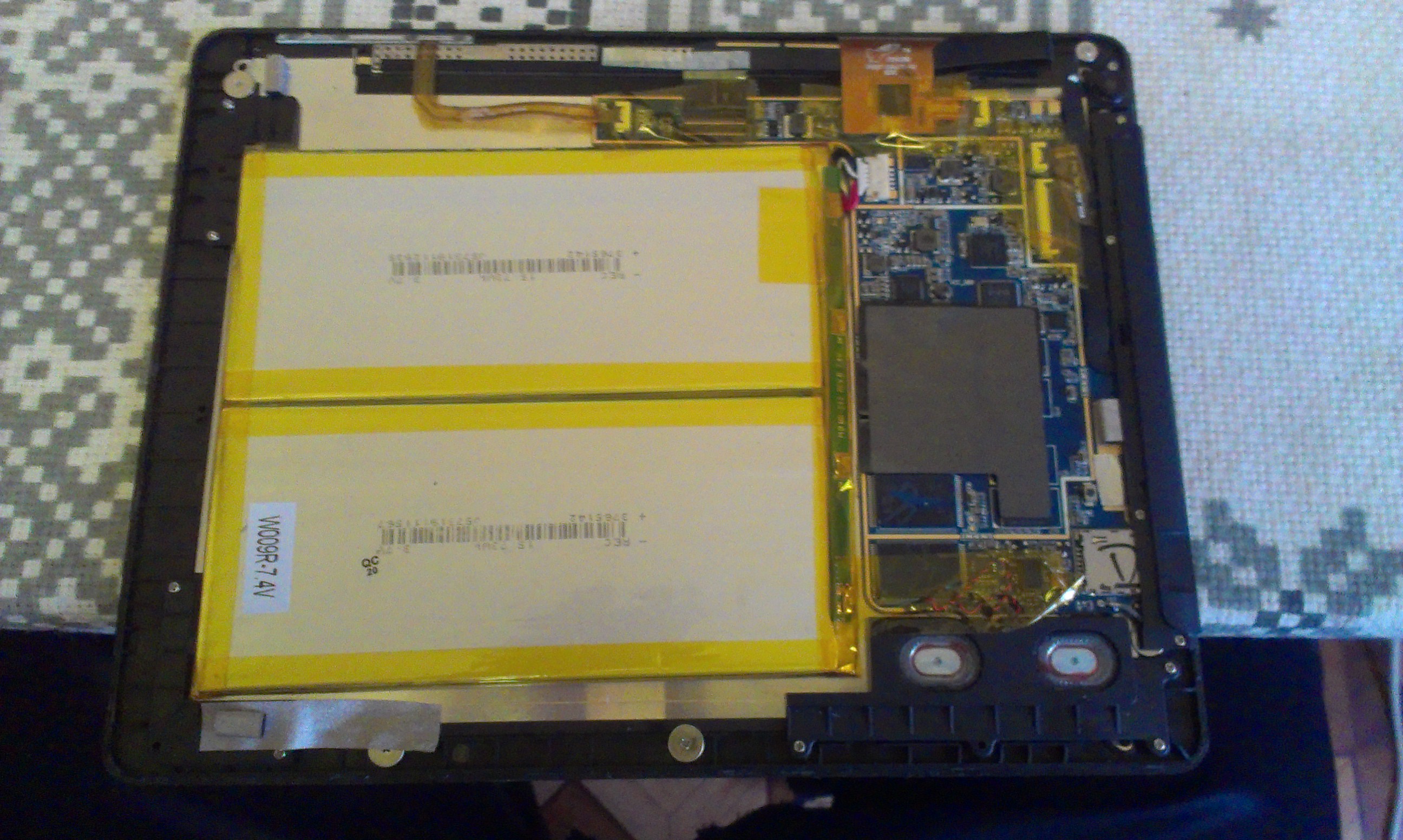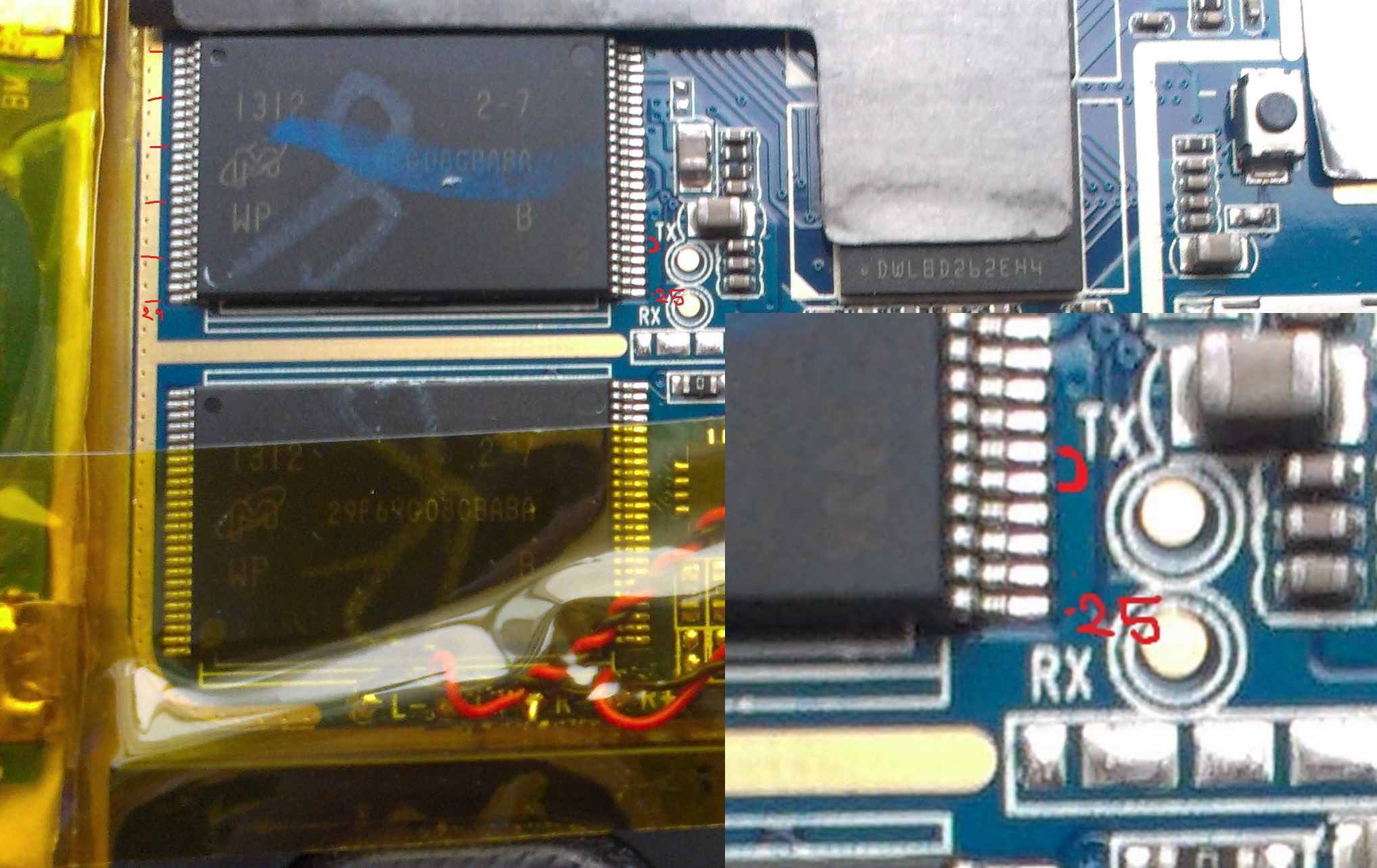Recovering a TeXeT TM-9750HD Tablet from a Full Brick State
Hello.
I want to talk about the recovery from the state of full brick of my TeXeT TM-9750HD tablet in the nee Teclast P98HD. I bought it for 7590 rubles in my Chelyabinsk, a tablet with a Retina screen and an RK3188 processor for a price I immediately attracted. For a couple of days, I honestly sat on the stock firmware from texet, but although AnTuTu showed 18.5 million parrots on it, the interface brakes and the absence of some things the developer needed made me look at custom firmware.
After a short search, 2 candidates were found. One from w3bsit3-dns.com, on Android 4.2.2 which, by the way, I was delighted to call it good firmware, the other on Android 4.1 from rockchipfirmware and it was a fatal error, let's call it bad firmware. First, with the help of RKBatchTool, I rolled up a good firmware, and I had to calm down, but there is no limit to perfection. The fact is that in good firmware there were several droplets and one big spoon of tar. It rebooted 1, 2 times a day at the most inopportune moment for no reason, it terribly enraged me. Then I decided to try a bad firmware. RKBatchTool wanted to warn me that this is a bad idea stubbornly giving an error, but I did not give up, then using rkflashtool and Ubuntu forcibly flashed the images kernel.img, misc.img, recovery.img, boot.img, system.img, parameter by the offsets recorded in the parameter file. After the reboot, the tablet stopped showing any signs of life. It did not turn on, and was not detected by USB in any operating system. I did not enter recovery mode or bootloader. After sitting a week without a tablet. I realized that I needed to fix it and started looking for information on how to recover it from the hard-brick. After two days of searching, the MaskROM keyword was found - this is the mode the processor enters when it does not find flash memory chips, and since flash memory is not needed to switch to this mode, in fact, you can do anything with the tablet. From the freaktab website from a user of Finless Bob, who is familiar to many from the firmware for dongles on RockChip processors, I found instructions for restoring the MK808 dongle by closing legs 8 and 9 to enter MaskROM.

As a little radio amateur I know what to close just so any contacts are not worth it. Therefore, I decided to first find out about flash memory that was installed on my tablet. I had a Micron 29F64G08CBABA. Most importantly, I learned that in my case it was necessary to close contacts 29 and 30.

It was time to act. Armed with an eye scalpel that was purchased specifically for parsing the tablet, I started the operation. The instructions found said what you need:
1 - short-circuit the findings of the flash memory chip
2 - connect the tablet to the computer via USB
3 - and turn on the tablet
4 - open the conclusions of the chip when the tablet appears in the list of Windows devices.
Having done as it was written in this instruction, I succeeded. The tablet appeared in the list of devices but why immediately disappeared. Half a day poking with a scalpel into these microcircuits. As a result, I found out that on my tablet the power button needs to be kept pressed constantly only then it will not disappear. In preparation, I launched RKBatchTool and rolled up the winning good firmware. At the end, RKBatchTool reported on success. The tablet rebooted and boot animation appeared. Emotions knew no bounds. Now the tablet is in good health, the only way it continues to reboot for no reason. Developer companies are in no hurry to release updates.
The article is written for enthusiasts like me, for broken tablets I am not responsible.
I want to talk about the recovery from the state of full brick of my TeXeT TM-9750HD tablet in the nee Teclast P98HD. I bought it for 7590 rubles in my Chelyabinsk, a tablet with a Retina screen and an RK3188 processor for a price I immediately attracted. For a couple of days, I honestly sat on the stock firmware from texet, but although AnTuTu showed 18.5 million parrots on it, the interface brakes and the absence of some things the developer needed made me look at custom firmware.
After a short search, 2 candidates were found. One from w3bsit3-dns.com, on Android 4.2.2 which, by the way, I was delighted to call it good firmware, the other on Android 4.1 from rockchipfirmware and it was a fatal error, let's call it bad firmware. First, with the help of RKBatchTool, I rolled up a good firmware, and I had to calm down, but there is no limit to perfection. The fact is that in good firmware there were several droplets and one big spoon of tar. It rebooted 1, 2 times a day at the most inopportune moment for no reason, it terribly enraged me. Then I decided to try a bad firmware. RKBatchTool wanted to warn me that this is a bad idea stubbornly giving an error, but I did not give up, then using rkflashtool and Ubuntu forcibly flashed the images kernel.img, misc.img, recovery.img, boot.img, system.img, parameter by the offsets recorded in the parameter file. After the reboot, the tablet stopped showing any signs of life. It did not turn on, and was not detected by USB in any operating system. I did not enter recovery mode or bootloader. After sitting a week without a tablet. I realized that I needed to fix it and started looking for information on how to recover it from the hard-brick. After two days of searching, the MaskROM keyword was found - this is the mode the processor enters when it does not find flash memory chips, and since flash memory is not needed to switch to this mode, in fact, you can do anything with the tablet. From the freaktab website from a user of Finless Bob, who is familiar to many from the firmware for dongles on RockChip processors, I found instructions for restoring the MK808 dongle by closing legs 8 and 9 to enter MaskROM.

As a little radio amateur I know what to close just so any contacts are not worth it. Therefore, I decided to first find out about flash memory that was installed on my tablet. I had a Micron 29F64G08CBABA. Most importantly, I learned that in my case it was necessary to close contacts 29 and 30.

It was time to act. Armed with an eye scalpel that was purchased specifically for parsing the tablet, I started the operation. The instructions found said what you need:
1 - short-circuit the findings of the flash memory chip
2 - connect the tablet to the computer via USB
3 - and turn on the tablet
4 - open the conclusions of the chip when the tablet appears in the list of Windows devices.
Having done as it was written in this instruction, I succeeded. The tablet appeared in the list of devices but why immediately disappeared. Half a day poking with a scalpel into these microcircuits. As a result, I found out that on my tablet the power button needs to be kept pressed constantly only then it will not disappear. In preparation, I launched RKBatchTool and rolled up the winning good firmware. At the end, RKBatchTool reported on success. The tablet rebooted and boot animation appeared. Emotions knew no bounds. Now the tablet is in good health, the only way it continues to reboot for no reason. Developer companies are in no hurry to release updates.
The article is written for enthusiasts like me, for broken tablets I am not responsible.
